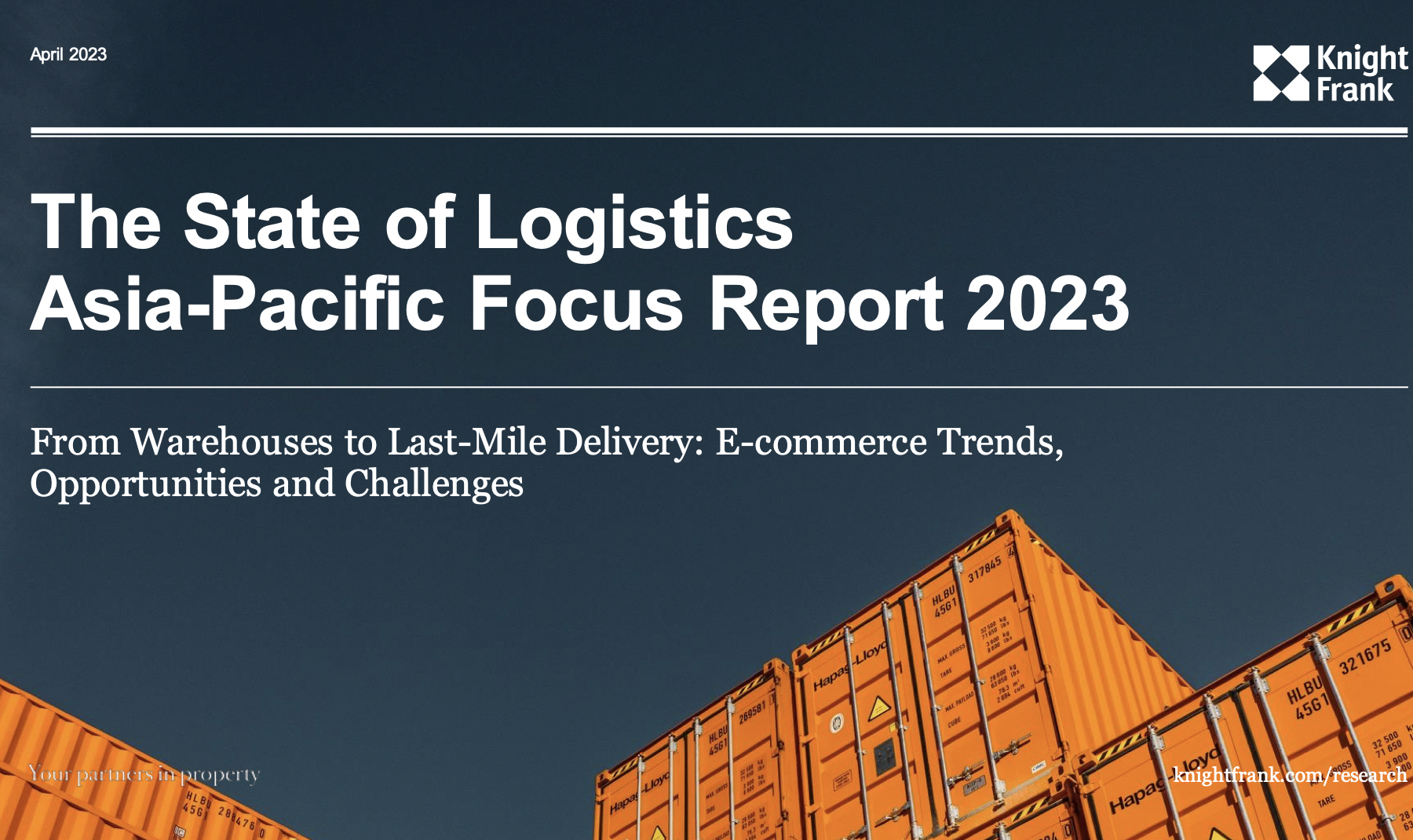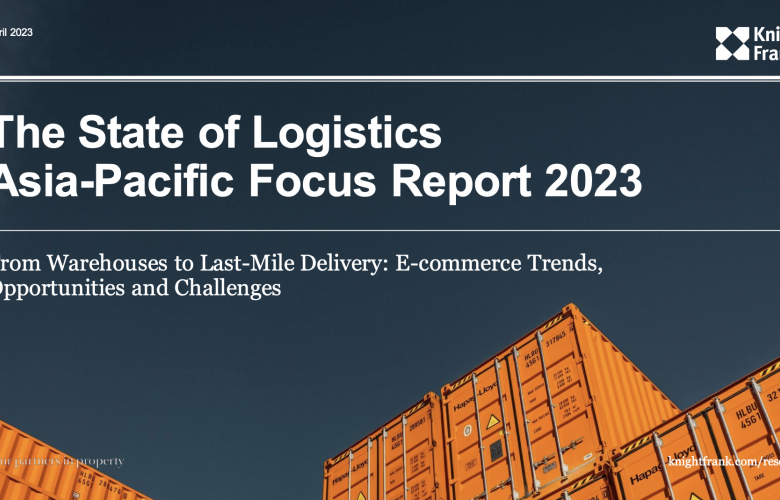Knight Frank forecasts robust demand for Asia-Pacific’s logistics sector amid supply shortages and reshuffling of the global supply chain
Contact
Knight Frank forecasts robust demand for Asia-Pacific’s logistics sector amid supply shortages and reshuffling of the global supply chain
Knight Frank’s latest research, The State of Logistics Asia-Pacific: Focus Report 2023 reveals Asia-Pacific’s (APAC) logistics industry is grappling with a severe supply-demand imbalance due to outdated facilities and rising land prices, resulting from the region's less established logistics fundamentals compared to the West.
Knight Frank’s latest research, The State of Logistics Asia-Pacific: Focus Report 2023 reveals Asia-Pacific’s (APAC) logistics industry is grappling with a severe supply-demand imbalance due to outdated facilities and rising land prices, resulting from the region's less established logistics fundamentals compared to the West.
Outdated facilities in cities such as Singapore, Sydney and Hong Kong SAR are limiting the availability of modern logistics facilities in the region. Although regional stock is set to rise by 10.5% in 2023, it remains insufficient to cater to the continuous growth of e-commerce, compounded by construction delays. According to Knight Frank's estimate, e-commerce demands three times more logistics space than traditional brick-and-mortar retail stores. As a result, the APAC region is projected to require 4.2 billion square feet of logistics space by 2027. However, only 20% of the necessary capacity is currently available. This situation is expected to persist, driving rental pressures higher. To address the shortage, authorities are establishing logistics hubs in neighbouring cities and provinces, but these are still in the early stages. Landlords and authorities are exploring vertical logistics properties to alleviate demand pressures and stay competitive.
Knight Frank’s Asia-Pacific Logistics Highlight H2 2022 report, revealed that the APAC logistics market experienced modest rental growth of 0.6% in the second half of 2022, bringing its year-on-year growth to 2.5%. Looking ahead to 2023, Knight Frank forecasts prime logistics rental growth of between 2% to 2.5%.
Despite the ongoing global structural headwinds, the research suggests that activities are expected to pick up in the second half of 2023, driven by the long-term structural demand drivers. The global supply chain's bottlenecks and logistical disruptions, rising prices, and the energy crisis, have resulted in a structural shift from just-in-time to just-in-case supply chain reshuffling, leading to the top priority of building supply chain resilience. In addition, multifaceted demand drivers such as the long-term relevance of e-commerce, the decentralisation of the supply chain as a result of the China Plus One strategy, and the increased emphasis on Environmental, Social, and Governance (ESG) initiatives and prompting innovation and growth in the sector.
Tim Armstrong, global head of occupier strategy and solutions at Knight Frank, said: “For occupiers, the lack of supply and the reshuffling of global supply chains heightens the importance of evaluating space requirements well in advance of lease expiries. Landlords are likely to more accommodative in the event of a global slowdown and ease in demand, although markets continue to remain robust. It is also anticipated that many occupiers will explore build-to-suit options to optimise space efficiencies and improve supply chain efficiency and speed to market. By taking these steps, occupiers can position themselves to weather the current market conditions and capitalise on future opportunities.”
Investment Opportunities
The Wealth Report, published by Knight Frank, identifies logistics and industrial investments as a top-performing asset class for High-net-worth Individuals (HNWI) in several key markets such as Australia, India, Japan, and South Korea. Emerging markets such as Southeast Asia and India's cities present opportunities for value-add and core-plus strategies, given the strong demand drivers into development opportunities.
Neil Brookes, global head of capital markets at Knight Frank, said: “Logistics investment volume in 2022 slowed down due to the rapid increase in borrowing costs and yield compression during the pandemic. Despite this, the logistics market remains highly attractive to both institutional investors and HNWI. There are investment opportunities as certain assets approach their five-year refinancing cycle, providing re-pricing opportunities. We anticipate that the current structural undersupply situation may persist over the next three to five years, which is likely to contribute to rental and pricing growth in the medium term.”
For the full report, click here








